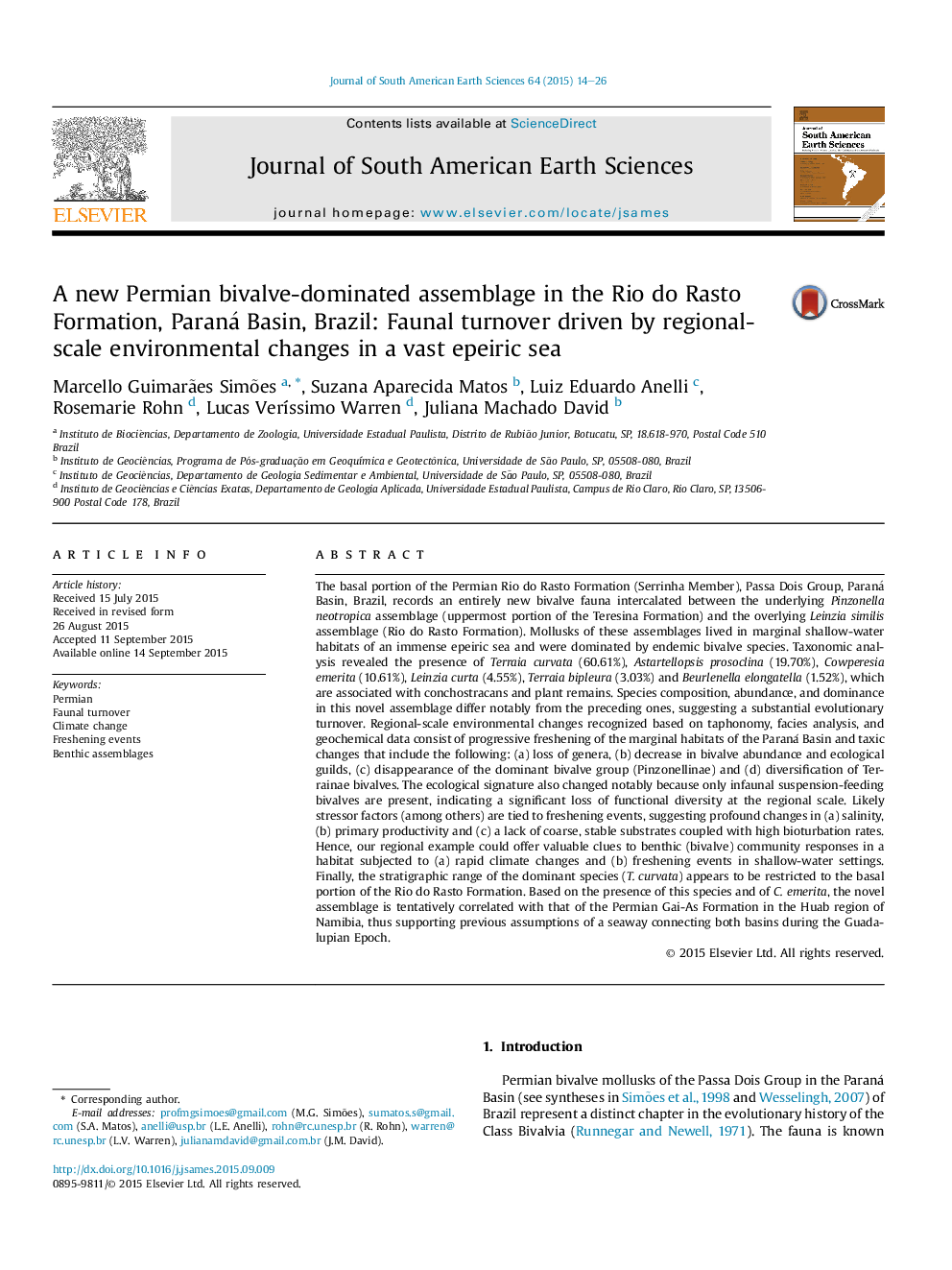| کد مقاله | کد نشریه | سال انتشار | مقاله انگلیسی | نسخه تمام متن |
|---|---|---|---|---|
| 4682107 | 1348894 | 2015 | 13 صفحه PDF | دانلود رایگان |

• We describe an entirely new Permian endemic bivalve assemblage.
• Assemblage records a substantial evolutionary turnover.
• Changes included significant loss of functional diversity at the regional scale.
• Stressor factors tied to climate controlled freshening events in marginal habitats.
• Data offer some clues to benthic responses to freshening due to climate changes.
The basal portion of the Permian Rio do Rasto Formation (Serrinha Member), Passa Dois Group, Paraná Basin, Brazil, records an entirely new bivalve fauna intercalated between the underlying Pinzonella neotropica assemblage (uppermost portion of the Teresina Formation) and the overlying Leinzia similis assemblage (Rio do Rasto Formation). Mollusks of these assemblages lived in marginal shallow-water habitats of an immense epeiric sea and were dominated by endemic bivalve species. Taxonomic analysis revealed the presence of Terraia curvata (60.61%), Astartellopsis prosoclina (19.70%), Cowperesia emerita (10.61%), Leinzia curta (4.55%), Terraia bipleura (3.03%) and Beurlenella elongatella (1.52%), which are associated with conchostracans and plant remains. Species composition, abundance, and dominance in this novel assemblage differ notably from the preceding ones, suggesting a substantial evolutionary turnover. Regional-scale environmental changes recognized based on taphonomy, facies analysis, and geochemical data consist of progressive freshening of the marginal habitats of the Paraná Basin and taxic changes that include the following: (a) loss of genera, (b) decrease in bivalve abundance and ecological guilds, (c) disappearance of the dominant bivalve group (Pinzonellinae) and (d) diversification of Terrainae bivalves. The ecological signature also changed notably because only infaunal suspension-feeding bivalves are present, indicating a significant loss of functional diversity at the regional scale. Likely stressor factors (among others) are tied to freshening events, suggesting profound changes in (a) salinity, (b) primary productivity and (c) a lack of coarse, stable substrates coupled with high bioturbation rates. Hence, our regional example could offer valuable clues to benthic (bivalve) community responses in a habitat subjected to (a) rapid climate changes and (b) freshening events in shallow-water settings. Finally, the stratigraphic range of the dominant species (T. curvata) appears to be restricted to the basal portion of the Rio do Rasto Formation. Based on the presence of this species and of C. emerita, the novel assemblage is tentatively correlated with that of the Permian Gai-As Formation in the Huab region of Namibia, thus supporting previous assumptions of a seaway connecting both basins during the Guadalupian Epoch.
Figure optionsDownload as PowerPoint slide
Journal: Journal of South American Earth Sciences - Volume 64, Part 1, December 2015, Pages 14–26